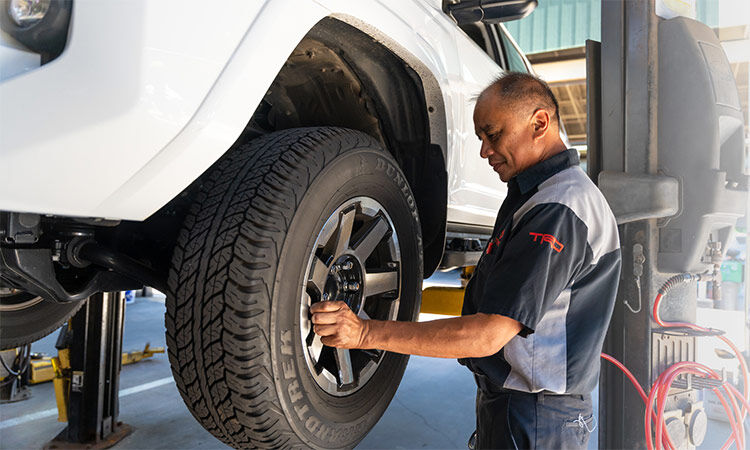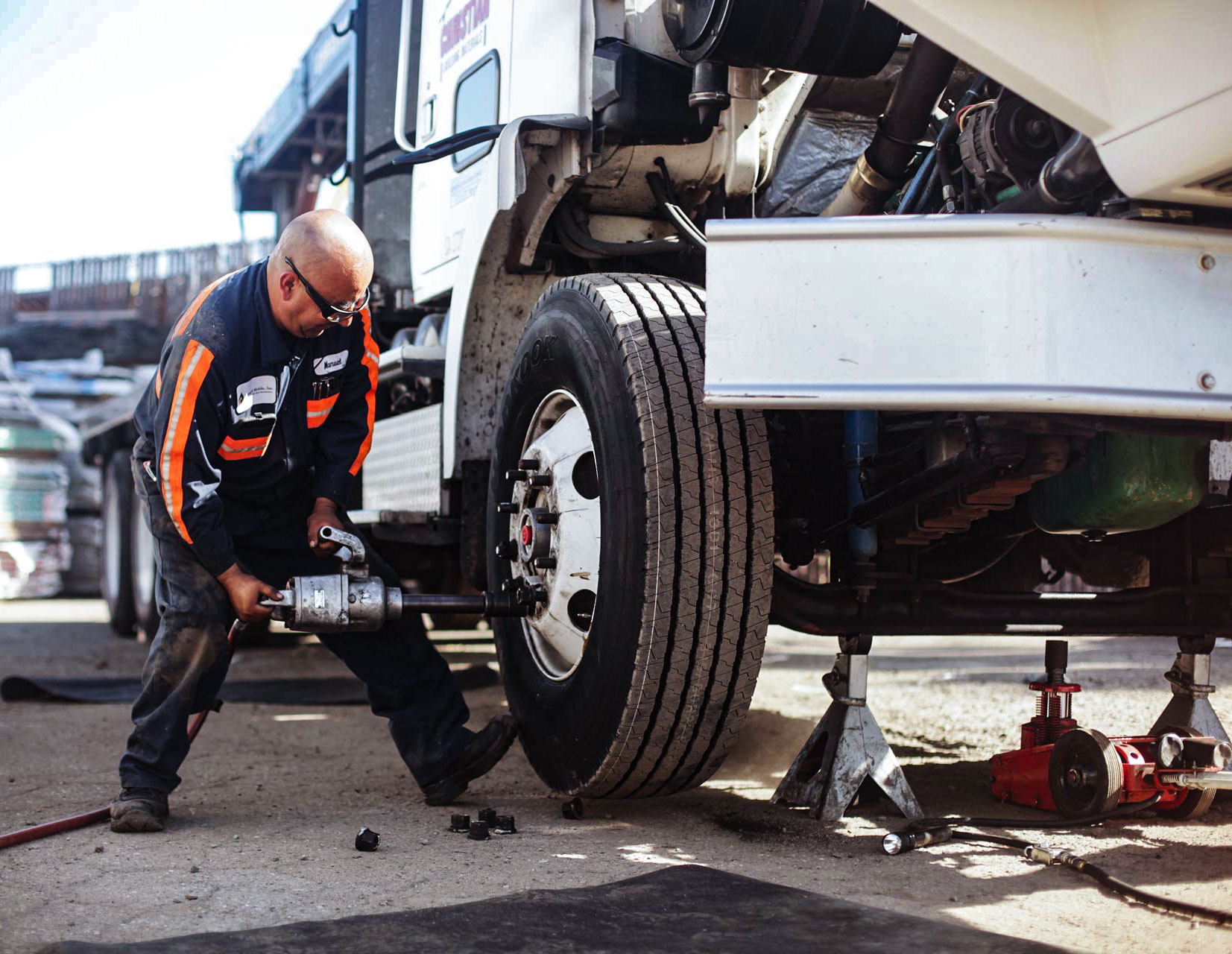Morris Tires: Where GMC Tire Service Satisfies Quality
Morris Tires: Where GMC Tire Service Satisfies Quality
Blog Article
Tire Solution: The Influence of Weather
When it comes to guaranteeing optimum efficiency and safety on the roadway, understanding the influence of climate problems on tire solution is crucial. GMC Tire Service. In this conversation, we will explore the intricate partnership in between weather problems and tire service, shedding light on the significance of weather-specific tire upkeep practices and factors to consider.
Warm and Tire Efficiency
When exposed to heats, tires experience adjustments in performance that can significantly influence vehicle safety and handling. The warm generated from long term driving or heat conditions triggers the tire rubber to soften, bring about reduced tread life and raised wear. As the rubber becomes softer, the tire's grip when traveling decreases, impacting stopping ranges and overall grip. In severe situations, excessive warmth can also trigger tire blowouts, posturing an extreme safety risk to the car and its occupants.

Cold Weather Effects
Cold climate conditions can have a considerable impact on tire efficiency and safety and security. In cool weather, tires might also lose air stress much more swiftly, which can impact handling and gas performance.
To reduce the results of cold climate on tires, it is vital to routinely examine tire stress and inflate them to the producer's suggested degrees. Making use of wintertime or all-season tires developed for cold weather problems can additionally improve traction and grasp on icy or snowy roads. Correct tire maintenance, including routine inspections for wear and damages, becomes much more critical during chillier months to make sure optimal efficiency and safety and security.
Rainy Conditions Effect
During rainy conditions, tire efficiency and safety can be significantly influenced by the wet roadway surfaces and reduced visibility. The walk pattern of tires plays a vital duty in preserving traction on wet roadways. Tires with worn-out footsteps are a lot more prone to hydroplaning, where a layer of water builds up between the road and the tire surface area, resulting in loss of traction. To battle this, vehicle drivers need to on a regular basis inspect their tires for appropriate walk depth and consider purchasing tires particularly designed for damp conditions.
Furthermore, rainy climate can additionally decrease exposure, making it challenging for motorists to see the road in advance clearly (GMC Tire Service). In such problems, it is important to adjust driving rates as necessary and keep a safe following range to enable for abrupt quits. Correctly inflated tires can likewise assist in preserving control on damp roadways by offering far better handling and hold
Snow and Tire Security
Snow-covered roads pose special challenges for vehicle drivers, stressing the importance of proper tire choice and maintenance. When driving in snowy problems, having the appropriate tires can make a considerable distinction in safety and performance. Winter tires are made with special rubber substances and step patterns to offer much better grip on snow and ice contrasted to all-season tires. The deeper footsteps and sipes of winter tires aid grip the road much better, decreasing the danger of sliding and sliding.
It is important to follow producer directions when mounting and making use of tire chains to protect against damage to the tires and car. By selecting the right tires, preserving appropriate rising cost of living, and taking into consideration added traction aids like tire chains, motorists can weblink improve their safety when navigating snow-covered roads.
Weather-Related Tire Upkeep
When encountered with different climate condition, appropriate tire upkeep ends up being an essential aspect of car safety and efficiency. Weather-related tire upkeep includes a series of methods targeted at ensuring optimal tire feature and long life in various weather condition situations. One key facet of weather-related tire maintenance is tire pressure guideline. Fluctuating temperatures can create tire pressure to vary, impacting grip and gas efficiency. Frequently examining and readjusting tire stress according to supplier referrals is vital for risk-free driving in transforming weather. In addition, tire walk depth plays a significant duty in dealing with various weather condition components. Tires with appropriate walk deepness offer far better grasp on damp or icy roads, decreasing the danger of skidding or hydroplaning. Checking tire walk routinely and changing tires when walk wear reaches a particular depth is vital for preserving grip and stability in unfavorable climate. By focusing on weather-related tire upkeep, vehicle drivers can improve safety, boost automobile efficiency, and extend the lifespan of their tires.
Verdict
In final thought, climate condition have a considerable influence on tire performance and safety. From heat impacting tire pressure and put on to cold weather lowering grip, it is necessary to consider the weather when preserving and making use of tires. visit site Rainy conditions can decrease grip and cause hydroplaning, while snow can enhance the danger of accidents if tires are not properly geared up. Weather-related tire maintenance is important in guaranteeing optimal performance and safety when driving.
In this discussion, we will explore the detailed relationship between weather condition conditions and tire service, shedding light on the value of weather-specific tire maintenance methods and factors to consider.

Report this page